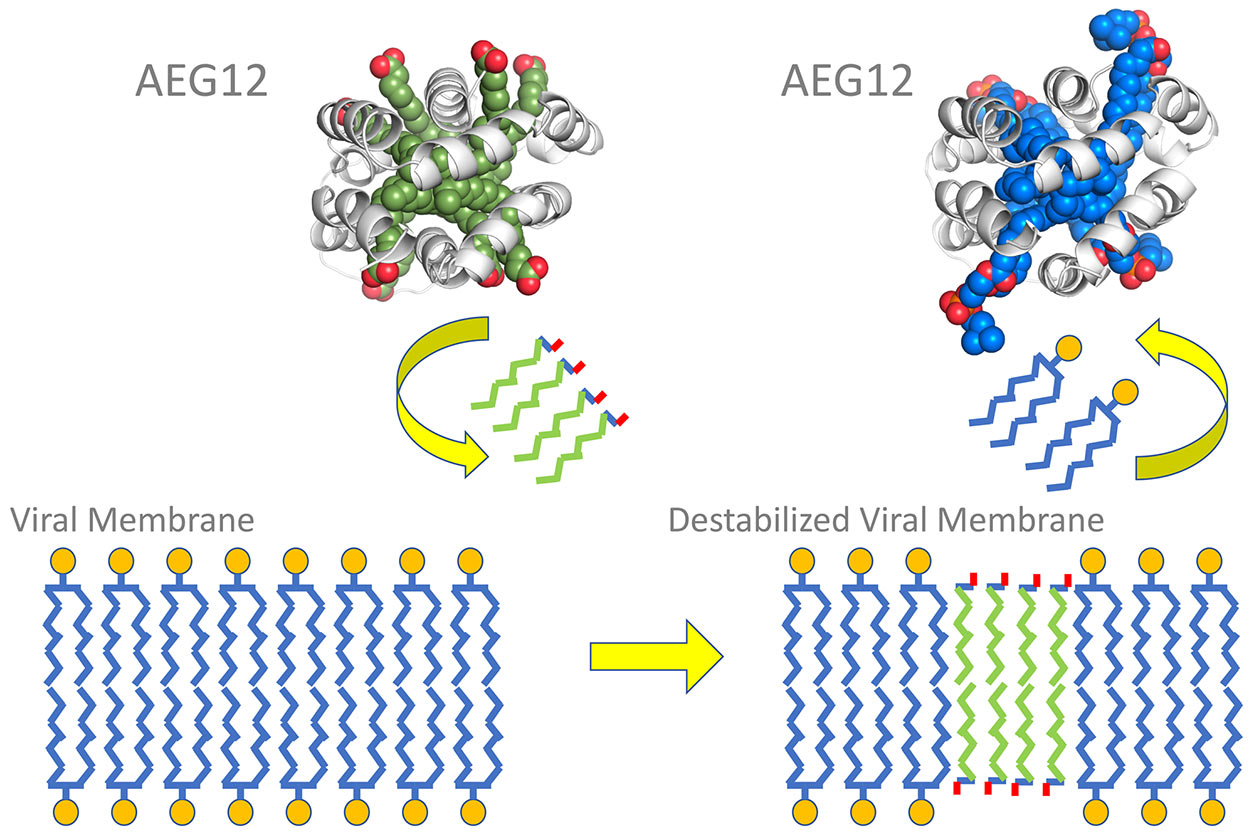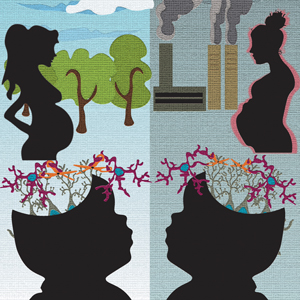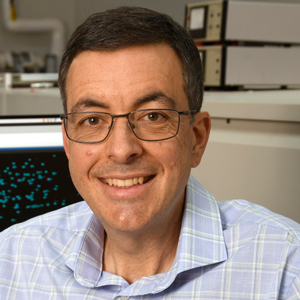 Mueller also leads the NIEHS NMR Research Core Facility, where he helps other institute scientists use the technology in their work. (Photo courtesy of Steve McCaw / NIEHS)
Mueller also leads the NIEHS NMR Research Core Facility, where he helps other institute scientists use the technology in their work. (Photo courtesy of Steve McCaw / NIEHS)The mosquito protein AEG12 strongly inhibits flaviviruses — a family of life-threatening viruses — and weakly inhibits coronaviruses, according to NIEHS scientists and their collaborators. Flaviviruses cause yellow fever, dengue, West Nile, and Zika, among other illnesses.
The researchers found that AEG12 destabilizes the viral envelope, which breaks the organism’s protective covering. The findings, published March 16 in the journal PNAS, could lead to treatments for diseases that affect millions of people around the world. However, the protein does not affect viruses without an envelope, such as those that cause pink eye and bladder infections.
Hungry for lipids
NIEHS scientists used X-ray crystallography to discover the molecular structure of AEG12. Senior author Geoffrey Mueller, Ph.D., head of the NIEHS Nuclear Magnetic Resonance Group, said at the molecular level, AEG12 rips out the lipids, or the fat-like portions of the membrane that hold the virus together.
'It is as if AEG12 is hungry for the lipids in the virus membrane, so it gets rid of some of its own lipids and exchanges them for the lipids it really prefers,' Mueller said. 'The protein has high affinity for viral lipids and steals them from the virus.' As a result, the AEG12 protein has great killing power over some viruses.
 Foo said they had been studying a cockroach molecule related to AEG12, so they examined AEG12 in the mosquito. (Photo courtesy of Steve McCaw / NIEHS)
Foo said they had been studying a cockroach molecule related to AEG12, so they examined AEG12 in the mosquito. (Photo courtesy of Steve McCaw / NIEHS)Although the researchers demonstrated that AEG12 was most effective against flaviviruses, AEG12 might also be effective against SARS-CoV-2, the coronavirus that causes COVID-19.
But Mueller said it will take years of bioengineering to make AEG12 a viable therapy for COVID-19. Part of the problem is AEG12 also breaks opens red blood cells, so researchers have to find ways to limit the protein’s action to targeting viruses only.
Viruses attack mosquitoes, too
Alexander Foo, Ph.D., an NIEHS visiting fellow and lead author of the paper, explained that mosquitoes produce AEG12 when they take a blood meal or become infected with flaviviruses.
Like humans, mosquitoes mount a vigorous immune response against these viruses. Their response includes making AEG12 to burst the viral covering.
But at the beginning of the project, Foo and his colleagues knew little about the protein’s function.
'The prospect of studying a new protein is exciting, yet daunting,' Foo said. 'Thankfully, we had enough clues and access to a wide range of expertise at NIEHS to piece it together.'
Co-author and crystallography expert Lars Pedersen, Ph.D., leads the NIEHS Structure Function Group.
 Pedersen also directs the NIEHS X-ray Crystallography Facility. (Photo courtesy of Steve McCaw / NIEHS)
Pedersen also directs the NIEHS X-ray Crystallography Facility. (Photo courtesy of Steve McCaw / NIEHS)He routinely uses information about a molecule’s physical makeup in his work and encourages more scientists to consider using this data in their studies.
'Our research shows that understanding the structure of a protein can be important in figuring out what it does and how it could help treat disease,' he said.
Citation: Foo ACY, Thompson PM, Chen S-H, Jadi R, Lupo B, DeRose EF, Arora S, Placentra VC, Premkumar L, Perera L, Pedersen LC, Martin N, Mueller GA. 2021. The mosquito protein AEG12 displays both cytolytic and antiviral properties via a common lipid transfer mechanism. Proc Natl Acad Sci U S A 118(11):e2019251118.

The viral membrane lipid bi-layer has water-loving heads (represented by yellow circles) and water-avoiding tails (blue squiggles). AEG12 (in green and gray) inserts some of its lipids (green squiggles) into the viral membrane, destabilizing it. During this exchange, AEG12 incorporates viral lipids into its interior (blue and gray). (Image courtesy of Geoffrey Mueller)









